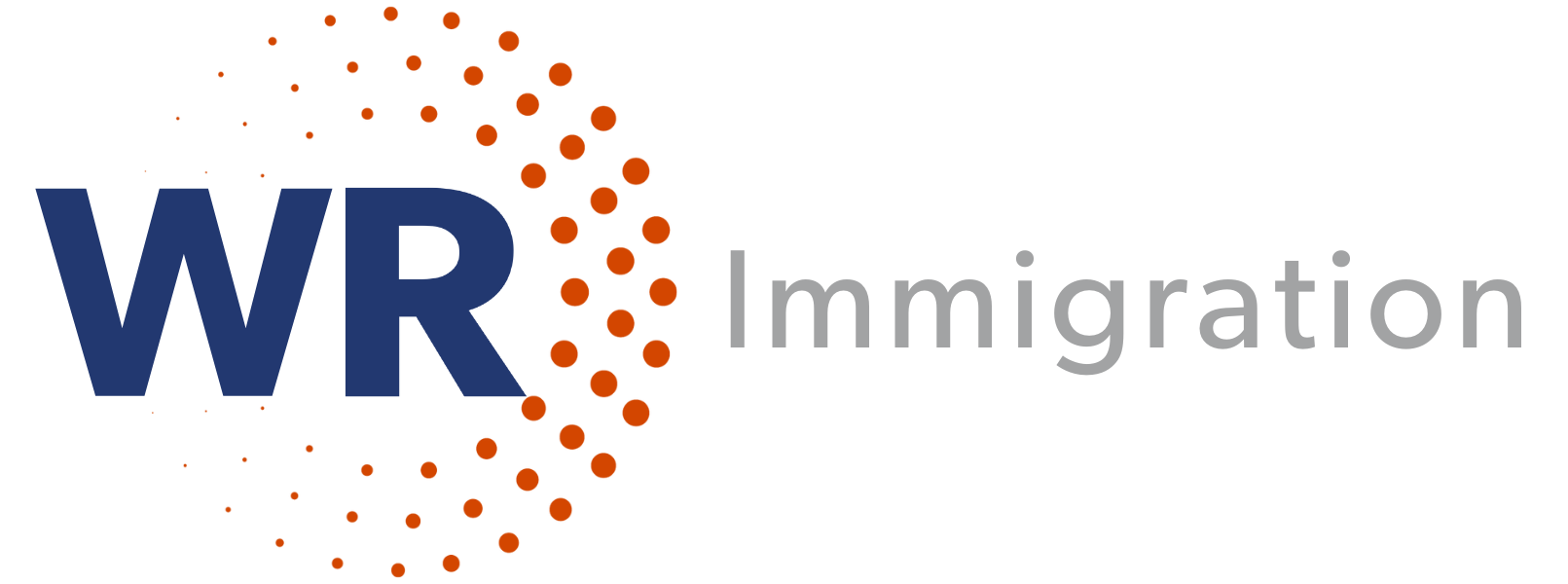In this edition, find the latest news about the start of fiscal year 2024 H-1B Cap registration, the U.S. Citizenship and Immigration Services’ announcement about the H-2B Cap limit being reached, Departments of Homeland Security’s extension of a comment period on a proposed change to an existing fee schedule for certain immigration benefits, and more.
H-1B Cap Registration Opened March 1st – Deadline to File H-1B Cap Registration is March 17th
The fiscal year 2024 Cap H-1B season is underway. The window to file registrations to enter the H-1B Cap lottery for Fiscal Year (FY) 2024 opened on March 1, 2023, and closes on Friday, March 17th, 2023.
To enter the H-1B Cap lottery for FY 2023 employers must file within this window, or they will have to wait another year. Universities and their related nonprofit entities, nonprofit research organizations and government research organizations are exempt from the cap and can ignore this reminder.
Employers that do not already have myUSCIS H-1B Registrant accounts can create new accounts as of February 21.
As in previous years, USCIS intends to conduct the lottery and notify employers of selections by March 31.
Details:
- FY 2024 H-1B Cap Initial Registration Period Opens on March 1. https://www.uscis.gov/newsroom/alerts/fy-2024-h-1b-cap-initial-registration-period-opens-on-march-1
USCIS Reaches H-2B Cap for Second Half of FY 2023, Announces Filing Dates for Supplemental Visas
U.S. Citizenship and Immigration Services (USCIS) announced on March 2, 2023, that it has received enough petitions to meet the congressionally mandated H-2B cap for the second half of fiscal year (FY) 2023. USCIS also announced the filing dates for supplemental H-2B visas for the remainder of FY 2023 made available under the FY 2023 H-2B supplemental visa temporary final rule.
H-2B Cap for Second Half of FY 2023
February 27, 2023, was the final receipt date for new cap-subject H-2B worker petitions requesting an employment start date on or after April 1, 2023, and before October 1, 2023. USCIS continues to accept H-2B petitions that are exempt from the congressionally mandated cap, including petitions for:
- Current H-2B workers in the United States who wish to extend their stay and, if applicable, change the terms of their employment or change their employers;
- Fish roe processors, fish roe technicians, and/or supervisors of fish roe processing; and
- Workers performing labor or services in the Commonwealth of the Northern Mariana Islands and/or Guam (until December 31, 2029).
Filing Dates for Supplemental Visas
The Departments of Homeland Security (DHS) and Labor (DOL) jointly published a temporary final rule on December 15, 2022, increasing the numerical limit (cap) on H-2B nonimmigrant visas by up to 64,716 additional visas for all of FY 2023. These supplemental visas are available only to “U.S. businesses that are suffering irreparable harm or will suffer impending irreparable harm without the ability to employ all the H-2B workers requested in their petition,” USCIS said, as attested by the employer on DOL Form ETA 9142-B-CAA-7. These supplemental H-2B visas are for U.S. employers seeking to petition for additional workers at certain periods of the fiscal year before September 15, 2023.
The USCIS alert details the filing start dates for each of the remaining supplemental visa allocations under the temporary final rule.
USCIS previously announced that it had received enough petitions to reach the cap for the additional 18,216 H-2B visas made available for returning workers for the first half of FY 2023 with employment start dates on or before March 31, 2023.
Details:
- USCIS alert (Mar. 2, 2023). https://www.uscis.gov/newsroom/alerts/uscis-reaches-h-2b-cap-for-second-half-of-fy-2023-and-announces-filing-dates-for-the-second-half-of
- DHS/DOL temporary final rule, 87 Fed. Reg. 76816 (Dec. 15, 2022). https://www.govinfo.gov/content/pkg/FR-2022-12-15/pdf/2022-27236.pdf
- “Temporary Increase in H-2B Nonimmigrant Visas for FY 2023,” USCIS webpage (updated Mar. 2, 2023). https://www.uscis.gov/working-in-the-united-states/temporary-workers/h-2b-non-agricultural-workers/temporary-increase-in-h-2b-nonimmigrant-visas-for-fy-2023
DHS Extends Comment Period for Fee Rule; USCIS Releases Fact Sheet on Fee Waivers for Naturalization Applications
The Department of Homeland Security (DHS) has extended by five days, to March 13, 2023, the comment period for a rule published on January 4, 2023, proposing to change the fee schedule for certain immigration benefits. DHS said the extension was due to technical problems on the General Services Administration’s eRulemaking Portal that prevented some commenters from submitting their comments and supporting documentation.
Separately, U.S. Citizenship and Immigration Services (USCIS) released a fact sheet on requests for fee waivers for Form N-400, Application for Naturalization. The fact sheet includes a checklist of grounds that may be used as a basis for the fee waiver, and information about qualifying for a reduced fee if the applicant does not qualify for a waiver.
Details:
- DHS extension of comment period, 88 Fed. Reg. 11825 (Feb. 24, 2023). https://www.govinfo.gov/content/pkg/FR-2023-02-24/pdf/2023-03906.pdf
- Proposed Fee Rule Frequently Asked Questions, DHS, updated Feb. 23, 2023. https://www.uscis.gov/proposed-fee-rule-frequently-asked-questions
- Fact Sheet: Request for Fee Waiver for Form N-400, USCIS (n.d.). https://www.uscis.gov/sites/default/files/document/fact-sheets/FactSheetI-912RequestforFeeWaiverForFormN-400.pdf
Biden Administration Proposes Controversial Rule on ‘Temporary’ Measures to Limit Asylum at Southwest Border
The Biden administration issued a new proposed rule that it called “temporary,” which introduces a “rebuttable presumption of asylum ineligibility for certain noncitizens who neither avail themselves of a lawful, safe, and orderly pathway to the United States nor seek asylum or other protection in a country through which they travel.” The administration said the rule would deter migrants from relying on human smuggling networks, protect against extreme overcrowding in border facilities, and help to ensure that the processing of migrants seeking protection in the United States “is done in an effective, humane, and efficient manner.”
The administration said the proposed rule was being issued in advance of the expected termination of the Centers for Disease Control and Prevention’s (CDC) Title 42 public health order related to the COVID-19 pandemic and a consequent potential surge of migration into the United States via the southwest border. The CDC is expected to terminate its public health order on May 11, 2023, and the administration anticipates returning at that time to processing all noncitizens under Title 8 immigration authorities once Title 42 is terminated.
The proposed rule’s executive summary notes that U.S. officials’ encounters with noncitizens attempting to cross the southwest border into the United States without authorization “have reached an all-time high” even with the Title 42 public health order in place, “driven in large part by an unprecedented exodus of migrants from countries such as Colombia, Cuba, Ecuador, Nicaragua, Peru, and Venezuela.” The summary provides as an example that during a 30-day period ending December 24, 2022, the total daily encounters along the southwest border “consistently fluctuated between approximately 7,100 and 9,700 per day, averaging approximately 8,500 per day, with encounters exceeding 9,000 per day on 12 different occasions during this 30-day stretch.”
A Biden administration official reportedly said the new regulation constituted “temporary measures” and was done “out of necessity.” An administration statement from the Departments of Homeland Security and Justice lamented “the absence of congressional action to update a very broken, outdated immigration system.”
Reaction. Advocates objected to the new regulation. The American Immigration Lawyers Association (AILA) said the “transit ban” is “unworkable and a violation of U.S. asylum law. In a letter to President Biden last month, AILA President Jeremy McKinney and Executive Director Benjamin Johnson urged him to reconsider. They pointed to President Biden’s promise made during his presidential campaign to safeguard America’s commitment to asylum protection. Among other things, Mr. McKinney noted that “the countries through which people are fleeing are not ‘safe third countries’ by any stretch of the imagination, according to the U.S. State Department’s own reporting.” Mr. Johnson said, “This regulation is a clear violation of the rights of migrants under U.S. law to seek protection from persecution, regardless of how they enter the United States. The Biden Administration claims asylum will still be available under this regulation, but the so-called ‘rebuttable presumptions’ they propose will not provide sufficient opportunity for people in dire need to apply. It is absurd to expect asylum applicants who rarely have legal assistance to be able to rebut the presumptive bar set by this new rule and qualify for asylum protection.”
Comments on the proposed rule must be submitted by March 27, 2023.
Details:
- “Circumvention of Lawful Pathways,” DHS/DOJ Proposed Rule, 88 Fed. Reg. 11704 (Feb. 23, 2023). https://www.govinfo.gov/content/pkg/FR-2023-02-23/pdf/2023-03718.pdf
- “DHS and DOJ Propose Rule to Incentivize Lawful Migration Processes,” DHS, Feb. 21, 2023. https://www.dhs.gov/news/2023/02/21/dhs-and-doj-propose-rule-incentivize-lawful-migration-processes
- “Biden Administration Rolls Out New Asylum Restrictions Mirroring Trump-Era Policy,” CNN, Feb. 21, 2023. https://www.cnn.com/2023/02/21/politics/asylum-policy-biden-administration/index.html
- “AILA Condemns Biden Administration’s Push to Use ‘Transit Ban’ Against Vulnerable Asylum Seekers,” Press Release, American Immigration Lawyers Association, Feb. 21, 2023. https://www.aila.org/advo-media/press-releases/2023/aila-condemns-biden-administrations-push
- AILA letter to President Biden, Jan. 17, 2023. https://www.aila.org/advo-media/aila-correspondence/2023/letter-to-president-biden-regarding-the-proposed
USCIS Issues Guidance on Eligibility for O-1B Visa Classification
U.S. Citizenship and Immigration Services (USCIS) issued policy guidance on March 3, 2023, effective immediately, clarifying how it evaluates evidence to determine eligibility for O-1B nonimmigrants of extraordinary ability in the arts and nonimmigrants of extraordinary achievement in the motion picture or television industry.
The policy updates include a new chart in the USCIS Policy Manual’s appendix describing examples of evidence that may satisfy the O-1B evidentiary criteria, as well as considerations relevant to evaluating such evidence. The chart is also intended to assist petitioners in submitting appropriate evidence that may establish a beneficiary’s eligibility.
USCIS said the guidance also improves readability “to help adjudicators with predictable and transparent application of the O-1B evidentiary requirements, in support of consistent decisions and improvements in efficiency.”
The guidance in the Policy Manual “is controlling and supersedes any related prior guidance on the topic,” USCIS said.
Details:
- USCIS alert (Mar. 3, 2023). https://www.uscis.gov/newsroom/alerts/uscis-issues-clarifying-guidance-on-eligibility-for-the-o-1b-visa-classification
- USCIS Policy Alert (PA-2023-05) (Mar. 3, 2023). https://www.uscis.gov/sites/default/files/document/policy-manual-updates/20230303-ExtraordinaryAbility.pdf
- USCIS Policy Manual. https://www.uscis.gov/policy-manual


